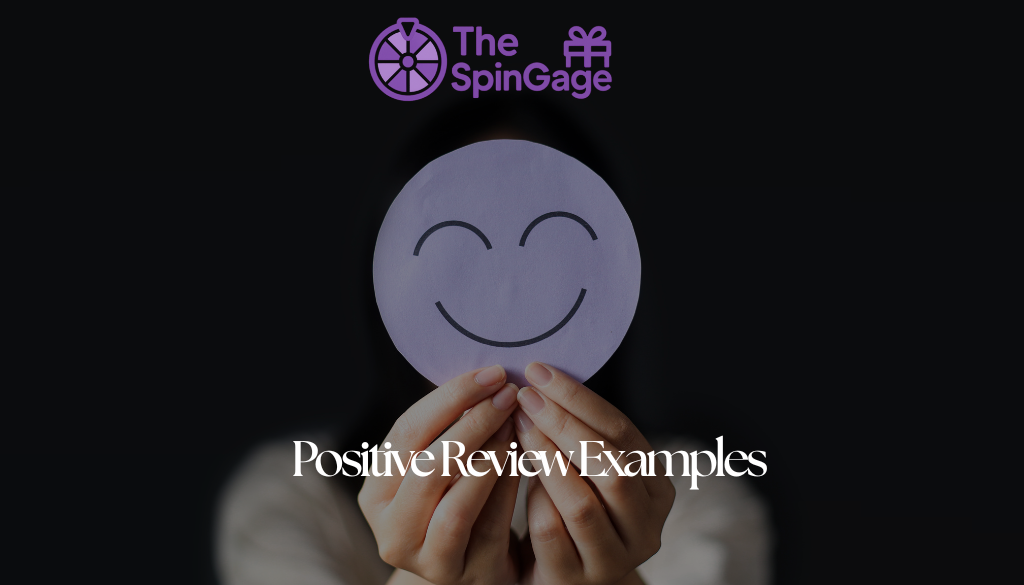The essence of excellent customer service is resolving a customer’s issue quickly, efficiently, and with a positive experience. While the approach may vary depending on the industry, the nature of the problem, and the individual customer, certain best practices hold true across the board. A skilled customer service agent actively listens to the customer’s concerns, understands their needs, and works diligently to provide a solution.
But what happens when the customer is unreasonable, or the problem cannot be solved immediately? Even in these challenging situations, patience, clear communication, and well-defined boundaries can turn a potentially negative interaction into a constructive one. Your team must know the limits of what they can and cannot do while still striving to meet the customer’s expectations. By equipping your employees with the right information, tools, and support, they can confidently navigate every interaction—enhancing customer satisfaction and elevating your brand’s reputation.
Let’s dive into what truly defines a strong example of customer service—and what pitfalls to avoid.
The retail sector, in particular, is often associated with poor customer service, with many stories highlighting breakdowns in communication between staff and customers. As a manager or supervisor, it is your responsibility to prevent such scenarios and instead foster and showcase outstanding customer service experiences. By doing so, you not only protect your brand image but also create memorable moments that customers will share and remember.
Table of Contents
What Makes Customer Service Truly Exceptional?
Before we explore examples of outstanding customer service, it’s essential to understand what it really means. At its core, great customer service is about delivering timely, attentive, and friendly support that meets customers’ needs while fostering trust and long-term relationships with your organization.
3 Key Qualities of Excellent Customer Service
When examining top-notch customer service across various companies and industries, certain qualities consistently stand out. Here are the three most important traits that define exceptional customer service:
Professionalism
This means that customer support reps, agents, and retail staff display a positive and professional attitude to everyone they interact with.
Patience
Every customer is different. Great customer service requires patience, understanding, and flexibility to deal with varying situations.
People-focused
Good customer service is centered around connection and building a great relationship with your customer.
Examples of good customer service situations
Ok, now that we all know what good customer service means and the qualities it includes, let’s take a look at some common examples of good customer service skills in different situations.
- A customer had to wait a long time to connect with a customer service agent: Unfortunately, customer service teams can easily be short-staffed and deal with too many customers at a given time, which results in lengthy wait times. When this happens, customer service reps should thank customers for their patience and do everything they can to ensure the rest of the interaction is as speedy and efficient as possible.
- A customer needs to cancel an order, but can’t find their order number: One of the best qualities of a good customer service representative is their ability to solve a problem with little information. In this situation, a great customer service rep should request all of the information they possibly can. What email did the customer use for the purchase? What day did they make the purchase? Once they have as much information as possible, provide adequate follow-up and steps that will be taken. If the cancellation needs approval or takes time to process, ensure the customer knows what that timeline looks like and share any confirmation numbers of communication they should look for.
- A customer was given incorrect information from another employee and called to complain: This situation happens all too often for practically every organization. In this case, you want your customer to feel heard, appreciated, and respected. Let your customer tell you what happened and how they feel. Then, patiently address the issue and provide them the correct information in a way that makes them feel supported and acknowledged.
Are You Ready to Transform Your Customer Service Experience With TheSpinGage?

In today’s fast-paced world, delivering exceptional customer service is no longer just an advantage—it’s the heartbeat of a thriving business. Whether your goal is to resolve a customer’s issue quickly, maintain professionalism under pressure, or create memorable interactions that turn first-time buyers into lifelong advocates, mastering the art of customer service is essential. From understanding each customer’s unique needs to handling challenging situations with patience and clarity, the ability to consistently deliver outstanding service elevates your brand, builds trust, and fosters lasting loyalty., we empower businesses like yours to develop these critical skills through comprehensive training, real-world examples, and actionable strategies that make excellence achievable. Imagine a team that confidently navigates every interaction, creating positive experiences even in the most complex situations—all while reinforcing your brand’s reputation.
Don’t leave customer satisfaction to chance; make it your defining strength and watch your business grow.
Start elevating your customer service today!
Get Started Now
Examples of good customer service in retail
- A customer had to wait a long time to check-out: Much like long wait times for call centers, sometimes long lines in a store are inevitable. In this situation, you don’t want to take any more of their time than necessary, so focus on checking them out as quickly as possible, and do so with a smile and patience, too!
- A customer was incorrectly charged for the same item twice and they want a refund: Money can be a sensitive topic for customers, which means they’ll likely want their refund ASAP. But unfortunately, banks and credit card companies may take longer to process refunds. Look for ways to keep the customer happy; consider providing them with a discount for their next purchase, or maybe see if they’d be happy receiving the refund via an in-store gift card.
- A customer is unhappy with a purchase and wants to make a return after the exchange period is up: While customer service policies are put in place for a reason, sometimes it’s worth bending the rules if that means you can turn a dissatisfied customer into a happy one. Be honest and forthcoming about the process that you need to follow, and do so in a friendly, communicative manner.

Mastering Customer Service Skills
Understanding Customer Service Skills
Exceptional customer service skills may come naturally to some, but teaching them effectively requires precision and clarity. At its core, excellent customer service aligns with your company’s values and messaging. To define these skills for your team, start by identifying the key principles that guide your business. Then, develop both long-form and short-form learning materials that detail the processes, procedures, and behaviors that bring those principles to life.
While some employees are naturally gifted communicators and problem-solvers, even the most promising candidates will need guidance. Interviews can highlight potential, but thorough training ensures your team knows the specific dos and don’ts of your brand’s customer service standards.
Customer Service Training
Great customer service begins with engaging, effective training. Employees who embrace learning are far more likely to apply these skills successfully.
In retail and other customer-focused industries, eLearning platforms can be invaluable. Tools like Lessonly by Seismic allow teams to access training digitally before stepping into real-world scenarios. Training can be structured to cover everything from broad customer service duties to focused lessons, such as phone etiquette or handling difficult customers.
Training materials should be accessible on mobile devices, but printed cheat sheets can also reinforce key points. A clear list of actions, reactions, FAQs, and responses ensures employees always have guidance at their fingertips.
Retention comes from repetition and immersive learning. Scheduling lessons at regular intervals—weekly, monthly, or annually—helps information stick. Updates to training materials are automatically reflected, keeping your team current without disrupting their learning cadence.
To make training engaging, incorporate a mix of media and sprinkle in fun elements. Include customer service quotes or examples from both famous figures and your own employees to reinforce brand values and recognize internal expertise.
Real-life examples are critical. Employees should see how good customer service looks in practice, as well as the potential consequences of missteps. Simple, relatable scenarios help them internalize lessons before facing similar situations on the job.
Delivering Excellent Customer Service
When employees consistently demonstrate strong customer service, it becomes a hallmark of your company culture. Good examples set the standard for others, ensuring consistent experiences across all touchpoints.
Providing excellent service goes beyond training tips. Whether in retail, call centers, or digital support, employees must be equipped to deliver exceptional experiences. Effective training ensures these skills are applied consistently, building a foundation for long-term customer satisfaction.
Companies Excelling at Customer Service
Some companies serve as shining examples of exceptional customer service:
Chick-fil-A
Chick-fil-A sets the standard for politeness and proactive service. Employees regularly go above and beyond, demonstrating that prioritizing the customer experience can differentiate a brand from competitors.
Trader Joe’s
This supermarket chain consistently earns praise for friendly, knowledgeable staff. Even in a highly competitive industry, excellent service fosters customer loyalty.
Zappos
Zappos revolutionized online retail by focusing on relationships and customer trust. Their employees create memorable experiences, turning routine transactions into opportunities for long-term loyalty.
Why Customer Service Matters
In today’s digital world, one negative interaction can quickly damage a company’s reputation. Prioritizing exceptional service offers tangible benefits:
Customer Retention
Acquiring new customers is expensive; keeping existing ones is far more cost-effective. Companies like Apple thrive on brand loyalty, and exceptional customer service helps maintain it.
Word-of-Mouth Growth
Happy customers become brand ambassadors. Positive experiences lead to recommendations, referrals, and an ever-expanding customer base—built not on products alone, but on service excellence.
Making Great Customer Service a Reality
These examples of outstanding service aren’t just aspirational—they’re achievable. With the right training platform, teams can develop the skills, confidence, and mindset to deliver consistent, exceptional service. Tools like Seismic Learning (formerly Lessonly) empower teams to transform training into real-world success.
Conclusion
Exceptional customer service is more than a skill—it’s the heartbeat of a successful business. By clearly defining what excellent service looks like, providing engaging and consistent training, and leading by example, companies can create experiences that delight customers and build lasting loyalty. Great customer service not only strengthens relationships and encourages repeat business but also turns satisfied customers into enthusiastic advocates for your brand.
Investing in your team’s customer service skills isn’t just a training exercise—it’s a long-term strategy that drives growth, enhances reputation, and sets your company apart in a competitive marketplace. When every employee understands and embodies the principles of outstanding service, exceptional customer experiences become the norm, not the exception.












Leave a Reply